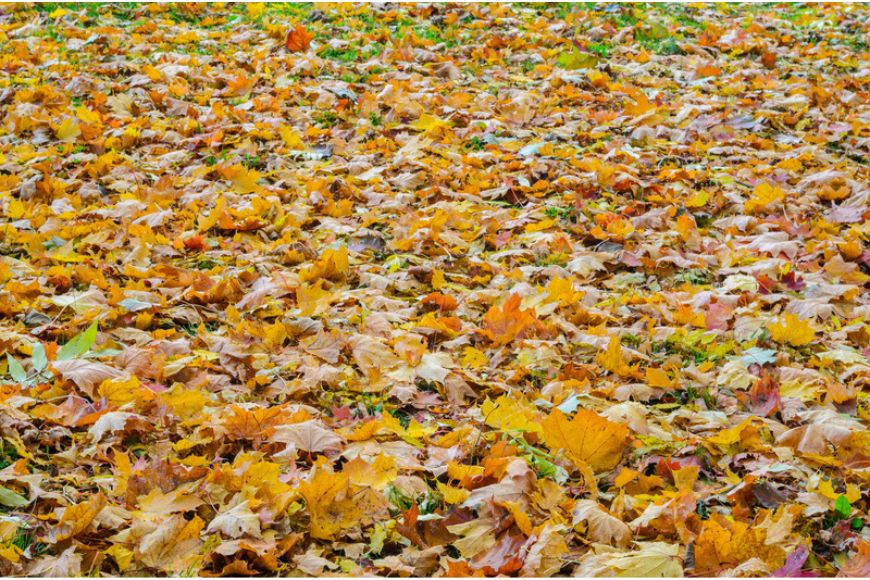
What to do with Leaves in the Fall
Fall is upon us, and if you have any trees in your yard, you’ll notice that they are slowly turning color and dropping onto your lawn. Some might think that this is a bad thing, but it doesn’t have to be. There are many uses for all those leaves that accumulate in your yard every fall. Here are some ideas on how to use them.
Mow Them into Your Yard
This is the simplest and easiest way to use leaves. Trees pull nutrients from the soil to make the leaves in the spring and summer, and normally, they will fall next to the tree’s trunk and start to decompose, recycling those nutrients. So if you rake and bag the leaves every fall, then cart them off to the landfill, it will slowly drain the soil of the components needed to keep your trees healthy.
Instead, just use your mower to chop them up into small pieces. These will settle in between the blades of grass and quickly decompose and restore fertility to your soil. You will probably want to mow more often so that the leaves don’t form a thick layer that will damage the grass in your yard. If that happens, rake some of the time and mulch the leaves into your lawn the other times.
Use as Mulch for Flowers Beds, Gardens, and Shrubs
This is almost as easy, you do need to work the rake a bit though. Rake your leaves into piles and then spread them around the base of your shrubs, cover the ground in your flower beds, and the same with your garden. The leaves will form a protective mat as they begin to break down and keep weeds from sprouting up as well as help maintain moisture in the soil.
By spring, most of the leaves, if not all, will have broken down. Your perennials will pop up through them, and they will help you to control the weeds around shrubs and in your garden.
Insulate Your Plants from Cold Winter Weather
Some bulbs and young trees can be damaged by a cold snap during the winter months, so you might need to insulate them from the frigid temperatures. Piling leaves on top of them or putting a wire cage around them and filling it with leaves will do a great job of keeping it warm in the winter.
You can remove the cage in the spring after the weather starts to warm. You can leave the compacted leaves right on your bulbs. They can push their way up through the leaves, and this will also help to keep them from blooming too early in the spring and being damaged by a late frost.
Work Them Right into the Soil
Leaves contain a lot of nutrients and they can help to break up soil that contains a lot of clay and add organic matter to sandy soil. All you have to do is collect the leaves, spread them over your garden or flower beds, then use a shovel or rototiller to mix them into the soil. This will slowly enrich your soil and provide it with the things necessary to healthy plants.
Compost Them
Leaves make wonderful additions to your compost pile or bin. You need to balance the green and brown material you add for the best compost, and fall leaves will give you plenty of brown matter. If you have a mower that will bag clippings, just use it to collect the leaves. This will also chop them up which will hasten the composting. If not, just rake them up. Add them to your compost pile, alternating the leaves with grass clippings or manure. This will keep the green and brown matter balanced. Keep it moist, turn it regularly, and soon, you will have plenty of compost to return to your soil.
Make Leaf Mold
This is similar to composting, but it will take the leaves longer to break down. You can pile them up, in an out of the way, put them in bags with slits in the side to allow for ventilation or put them in a bin. All you need to do is keep them moist and turn them regularly. They will take longer to break down than if you are composting them, but they will still provide organic matter for your soil along with plenty of micronutrients.
Leave Them for Your Local Animals
If you aren’t too fussy about your yard and grass, you may want to leave the leaves right where they fall. Many insects, pollinators, worms and amphibians love leaf litter and will be thankful that you left your leaves for them. Your leaves will give them a nice blanket that will keep them warm and moist throughout the winter, helping you maintain biodiversity in your yard. They will eventually break down, providing nutrients for your soil and helping to condition it as well.
And Don’t Forget to Enjoy
Fall is a time to kick back and enjoy the fruits of your harvest while you are waiting for winter. Pile your leaves up for the kids and let them take a running leap into the colorful pile. Collect the prettiest and preserve them between sheets of waxed paper. Sit on your porch, enjoy a cup of coffee or hot cider, and watch as nature puts your leaves to work, just as she has for centuries in the woods and forests that once covered this continent.
